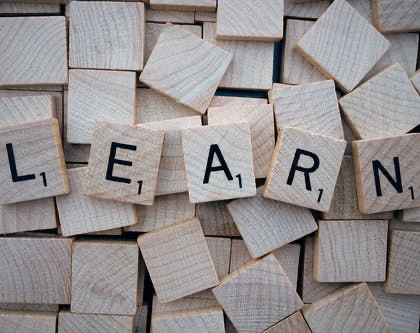You’ve probably seen them in your child’s homework folder—those simple boxes drawn under words that look almost too basic to be helpful. But don’t let their simplicity fool you! Elkonin boxes are one of the most powerful tools for helping children understand how sounds work in words.
Named after Russian psychologist D.B. Elkonin, these little boxes help children see, hear, and feel how individual sounds come together to make words. Think of them as training wheels for reading. They provide the support your child needs while they’re learning to balance sounds and letters.
What Elkonin Boxes Do (And Why They’re So Effective)
Elkonin boxes are simply a row of connected squares, with each box representing one sound in a word. For the word “cat,” you’d have three boxes because “cat” has three sounds: /k/, /a/, and /t/. The magic happens when children use these boxes to break words apart and put them back together again.
Here’s why they work so well: Many children struggle with reading because they can’t hear the individual sounds in words. They hear “cat” as one chunk of sound, not as three separate sounds that can be manipulated. Elkonin boxes make the invisible visible—they show children exactly how many sounds are in a word and where each sound belongs.
The boxes also help children understand that sounds have order and sequence. The first sound goes in the first box, the second sound in the second box, and so on. This sequential thinking is crucial for both reading and spelling success.
Tip 1: Start With Sound-Only Practice
Before introducing any letters, use Elkonin boxes to practice just hearing sounds. Draw three boxes on a piece of paper and say a simple word like “sun.” Have your child push a coin, button, or small toy into each box as they hear each sound: /s/ (push), /u/ (push), /n/ (push).
This sound-only practice helps children develop phonemic awareness—the ability to hear individual sounds in words. Start with words that have the same number of sounds as letters (like “cat,” “dog,” “run”) before moving to trickier words where the number of sounds and letters don’t match.
Make it fun by using different objects for each sound; maybe a red button for the first sound, a blue button for the second, and a green button for the third. Children love the hands-on aspect, and the physical movement helps cement the concept in their minds.
Tip 2: Add Letters To Connect Sounds And Symbols
Once your child can hear individual sounds clearly, it’s time to connect those sounds to letters. Draw your Elkonin boxes and have your child say the word, pushing letter tiles or writing letters in each box as they say each sound.
For the word “map,” they would say /m/ and place the letter “m” in the first box, say /a/ and place “a” in the second box, then say /p/ and place “p” in the third box. This process helps children understand that each sound has a corresponding letter or symbol.
Start with words where each sound matches one letter. As your child becomes more confident, you can introduce words with letter combinations like “ch” or “sh” that make one sound but use two letters. When you get to these combinations, explain that sometimes two letters work together to make one sound, so they still go in one box.
Tip 3: Use Them For Spelling Practice
Elkonin boxes aren’t just for reading; they’re fantastic for spelling too! Say a word out loud and have your child draw the correct number of boxes first. This step is crucial because it forces them to think about how many sounds they hear before they start writing letters.
Then have them fill in the boxes with the letters that make each sound. For example, if you say “fish,” they should draw four boxes (for /f/, /i/, /sh/) and then fill them in with f-i-s-h. Wait—that’s four letters but only three sounds! This is where the magic happens—they’ll put “sh” together in the third box because it makes one sound.
This process helps children become better spellers because they’re thinking about sounds first, then letters. It’s the opposite of memorizing spelling words without understanding why they’re spelled that way.
Tip 4: Make It Multisensory And Fun
Don’t limit yourself to paper and pencil! Draw Elkonin boxes in sand, finger paint, or even with chalk on the sidewalk. Have your child jump in and out of boxes drawn on the ground, or use masking tape to create boxes on the floor.
Try “mystery boxes” where you put different textured objects in each box—maybe sandpaper in the first box, cotton in the second, and a smooth stone in the third. As your child says each sound, they touch the corresponding texture. This multisensory approach helps children who learn better through touch and movement.
You can also make it a game by having your child “feed” toy animals the right sounds. Draw boxes on paper plates and have a toy dog “eat” the sounds in “dog” by having your child drop small treats in each box as they say each sound.
Common Mistakes To Avoid
Don’t rush to add letters too quickly. Make sure your child can hear sounds clearly before introducing the visual component of letters. If they can’t hear the sounds, adding letters will only create confusion.
Don’t forget about tricky words where sounds and letters don’t match perfectly. Words like “light” (4 sounds: /l/, /i/, /t/) or “cake” (3 sounds: /k/, /a/, /k/) need special attention and explanation.
Don’t make it feel like work. Elkonin boxes should be fun and engaging. If your child is getting frustrated, take a break and come back to it later. The goal is building confidence, not creating stress.
When To Use Elkonin Boxes
Elkonin boxes work best for children who are just beginning to understand that words are made up of individual sounds. They’re perfect for kids who can identify some letter sounds but struggle to put them together or take them apart.
Use them when your child seems to guess at words instead of sounding them out, or when they can read simple words but struggle with spelling. They’re also helpful for children who add extra sounds to words or leave sounds out when reading.
Remember that Elkonin boxes are a stepping stone, not a permanent tool. As your child becomes more confident with sounds and letters, they’ll need the boxes less and less. That’s the goal—to build skills that eventually become automatic.
Your Child’s Sound Awareness Starts Here
Elkonin boxes might look simple, but they’re doing complex work in your child’s brain. They’re helping build the foundation skills that make reading and spelling possible. Every time your child uses these boxes, they’re getting stronger at hearing sounds, understanding how sounds work in words, and connecting sounds to letters.
The beauty of Elkonin boxes is that you can use them anywhere, anytime, with materials you probably already have at home. A few boxes drawn on paper and some small objects to move around—that’s all you need to give your child a powerful learning tool.
Ready to watch your child’s reading skills grow? The Reading.com app incorporates Elkonin boxes and other proven phonemic awareness activities in a systematic, engaging way. Start your free 7-day trial and give your child the strong foundation they need for reading success.





